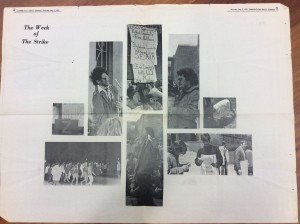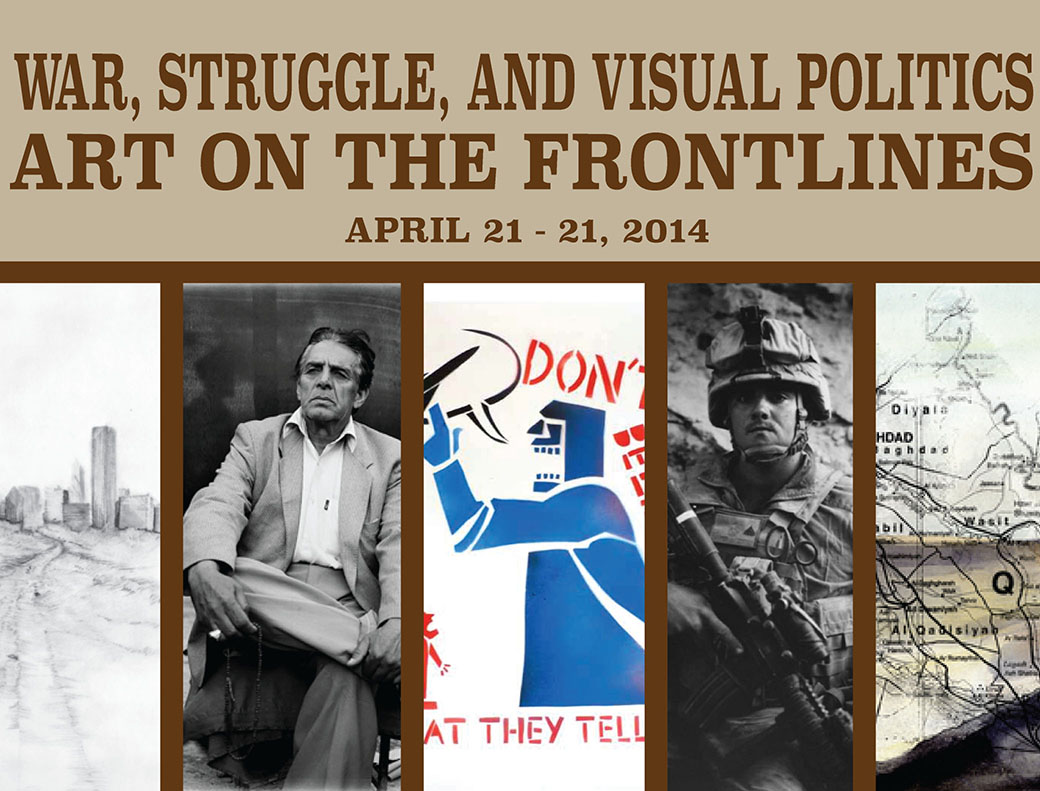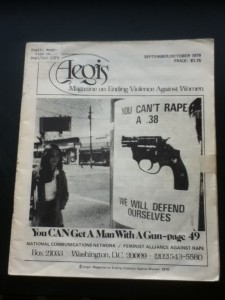On June 18 2015, Dylann Roof, 21 years old, shot and killed nine African-Americans at the Emanuel African Methodist Episcopal Church in Charleston, South Carolina. When Roof was apprehended, he wore the flags of Apartheid-Era South Africa and Rhodesia, former white supremacist settler colonial states in Southern Africa. Roof also had Confederate flags hung on his walls and frequented white power websites. These race based murders fueled an ongoing debate about Confederate symbolism and its usage in the private and public spheres. The Alternative Press Collection at the Archives & Special Collections is comprised of fringe publishing from both ends of the political spectrum such as White Patriot and Death to the Klan. The current debate around the Confederate flag draws on long standing uses of historical interpretation and cultural identity dating to the Civil War and Reconstruction era of 1861-1877. As demonstrated in this exhibition currently on display in the Archives through these selected materials from the Alternative Press, Northeast Children’s Literature and Labor collections, figures such as Confederate General Nathan Bedford Forrest, abolitionists John Brown and Frederick Douglass serve as symbolic totems of heritage, spirituality and citizenship. Continue reading
Tag Archives: demonstrations
Kent State and Student Strike at UConn
In 1968 students at UConn demonstrated against the ROTC and military recruiting on campus as national uprisings began to foment against the war in Vietnam. Corporate job recruiting by General Electric and Olin Mathieson on Gilbert Rd. drew confrontations between protestors and state police along with President Homer D. Babbidge’s approach toward a business friendly posture for the university. The combative times of the UConn Crisis in 1968-1969 was the prologue to an even more eruptive year to come. Lyndon Johnson’s escalation of the war led to major backlash in the mid to late 1960s which President Nixon’s administration promised to diminish by quietly widening military campaigns into neighboring Cambodia.
Student demonstrations in over 1,250 college campuses across the country led to confrontations with local police and the national guard. On May 4th, 1970 protests at Kent State University in Ohio led to National Guardsmen firing into demonstrators killing four individuals and wounding several others. The events of 1970 galvanized much of the public’s perception on the war in Vietnam however clashes at home along class and race lines similarly disrupted any clear consensus about the war at home and abroad. The days following the Kent State shootings on the University of Connecticut campus would produce the actions of students, faculty and administration which declared 1970 as the high water mark for social upheaval. The events below were extracted from the extensive archive documented by student organizations, administration and the Daily Campus: Continue reading
War, Struggle, and Visual Politics: Art on the Frontlines
The Archives and Special Collections in collaboration with the Dodd Center and Booklyn Artists Alliance, are hosting two days of events on War, Struggle and Visual Politics: Art on the Frontlines. Events will be held in the Dodd Research Center on April 21st and 22nd in conjunction with the Week In Humanities. Artists Seth Tobocman, Stephen Dupont, Marshall Weber, Chantelle Bateman and Aaron Hughes will be holding talks, workshops and presenting artwork around the focus of politics and activism in art and war. Students, community members, veterans and artists are encouraged to attend these events to provide a dynamic facilitation of how we utilize art, activism and memory to cope with war.
Art work will be on display in galleries as follows:Aaron Hughes : Institute for the Humanities : College of Liberal Arts and Sciences
Seth Tobocman : Contemporary Art Gallery : School of Fine Art
Stephen Dupont : Coop Bookstore : Downtown Stores
For a full list of events, please follow this link for the Week in Humanities.
Take Back the Night, the Day, the Street, the Home…
Wednesday, April 17th is Take Back the Night on the University of Connecticut campus. An event recognized across North America in response to violence against wimmin. Since its inception Take Back the Night has been about reclaiming space beyond the physically passive act of recognition and observation. Wimmin, the disproportionate victims of domestic violence, rape, sexual assault and harassment, have found solidarity through the action of speaking out and mobilization en masse against this violence. It’s sister mobilization, Slutwalk, has also achieved support across the broad spectrum of wimmin who experience patriarchy in the streets, an intended social space for interaction in work, transit and play.
The Alternative Press Collection (APC) in the Archives contains numerous publications on wimmin-positive theory and praxis in response to gender violence since the 1960s. Of note is the feminist publication Aegis: Magazine on Ending Violence Against Women published in 1978 by the Feminist Alliance Against Rape. Defined by the magazine’s statement of purpose, the movement to build solidarity through information was seminal in establishing wimmin’s resources in regions where silence was (is) the normative response to gender violence:
The purpose of Aegis is to aid the efforts of feminists working to end violence against women. To this end, Aegis provides practical information and resources for grassroots organizers, along with promoting a continuing discussion among feminists of the root causes of rape, battering, sexual harassment and other forms of violence against women.
Depicted in the image below is the cover of the September/October 1979 issue, portraying the advocacy debate around wimmin’s rights to self defense.
In addition to our extensive APC collection of periodicals is a recently acquired special collection art installation about building solidarity and non-violence amongst wimmin through art therapy. In this case, pulping panties into paper! From the Peace Paper Project comes another alliterative piece, Panty Pulping! The installment consists of loose pieces of paper made from mulched wimmin’s underwear that has been forged anew through storytelling and constructing the foundations of a new page for which a narrative can be written about wimmins voices together.
To view these pieces or any materials about wimmin’s rights and radical feminism, please contact the curator.
#Occuprint
One of our recent acquisitions is a poster collection created by Occuprint of the Occupy Wall Street Screen Printing Guild. The collection consists of thirty-one posters which were selected from hundreds on the Occuprint website. The materials were produced under creative commons allowing for free copying and usage as well as open submission by artists illustrating the occupy movement world wide. These logos and images are now finding their way onto t-shirts, buttons, flyers and websites. The prints began as sketches and signage made on pizza boxes in Zuccotti Park, New York during the Occupy Wall Street encampment which evolved into the polished and colorful images printed by the guild. Demonstration art and signage is not an original artifact of the Occupy movement, as our Poras Collection of Vietnam War Memorabilia demonstrates; infact the modern poster is often reliant on the influences of previous counter culture and purposefully self-aware. However, this material is a representation of demonstration sign art which was never part of the demonstration itself, thereby creating a digital archive of art in a political vein originating across the globe to both mimic the Occupy Wall Street movement and symbolize the individual geographies of protest. Its appeal for mass reproducibility, as occured in previous eras of resistance and demonstration, is in itself a form of protest to the commodification of art as an industry for profit, a root cause of “the 99%” slogan.
These posters can be viewed by appointment only, please contact the curator of the Alternative Press Collection for details. A great resource of digitized demonstration posters from the 1960s and 1970s can be found at the Oakland Museum of California.





